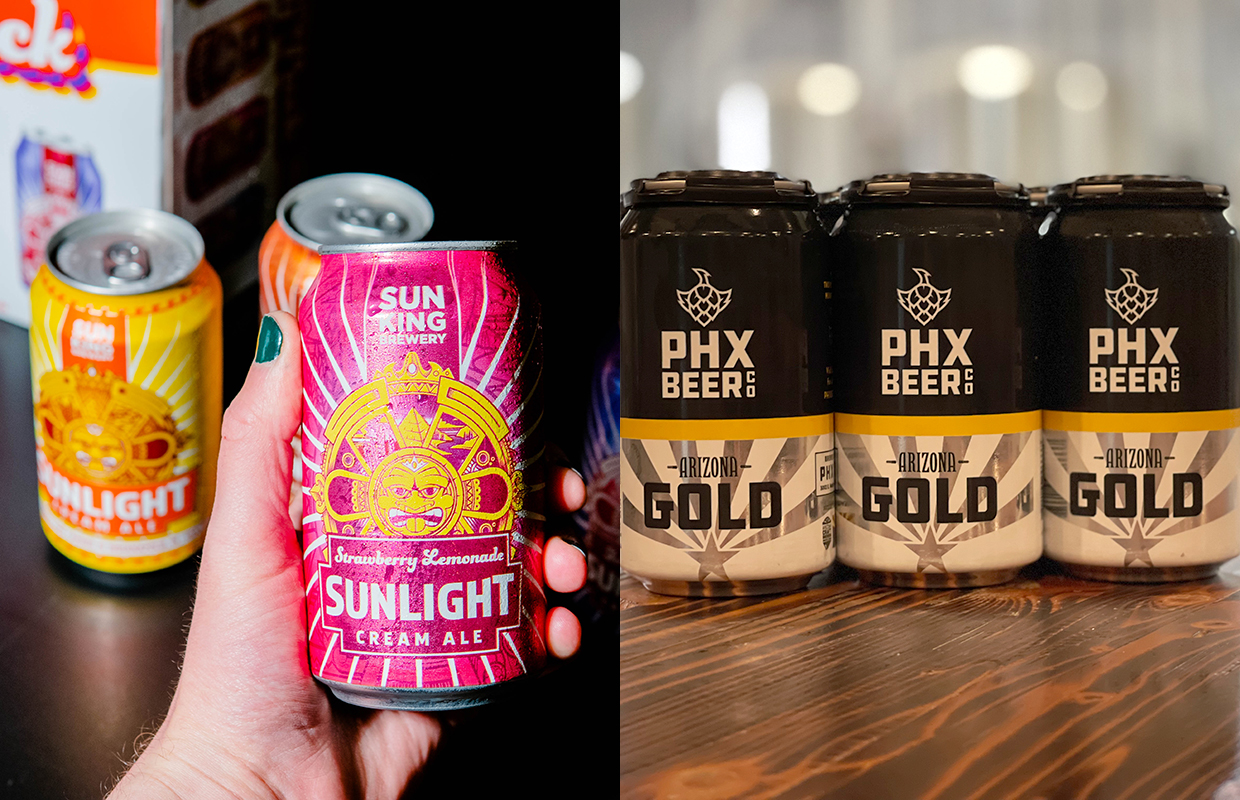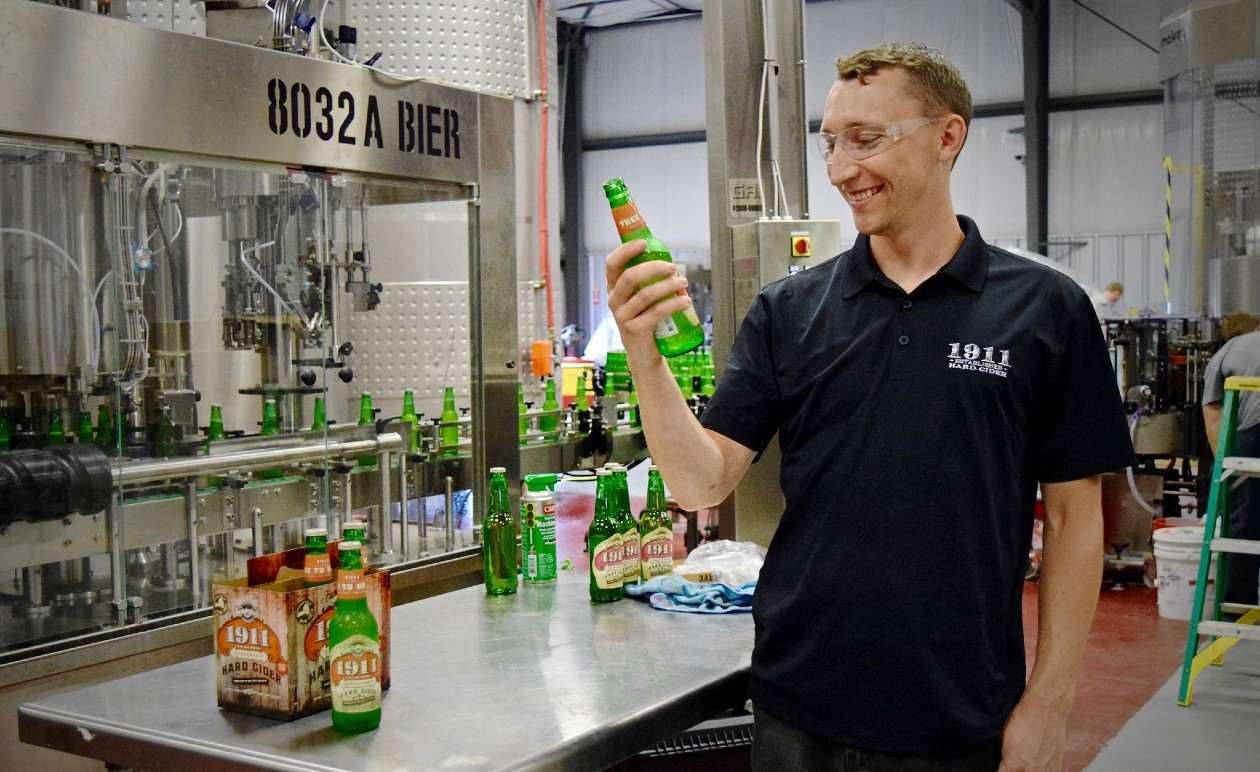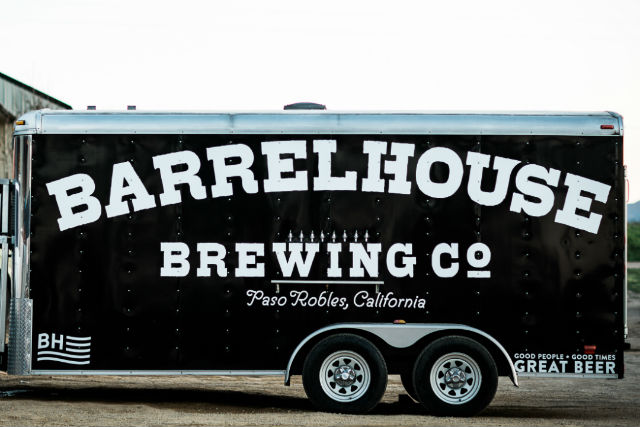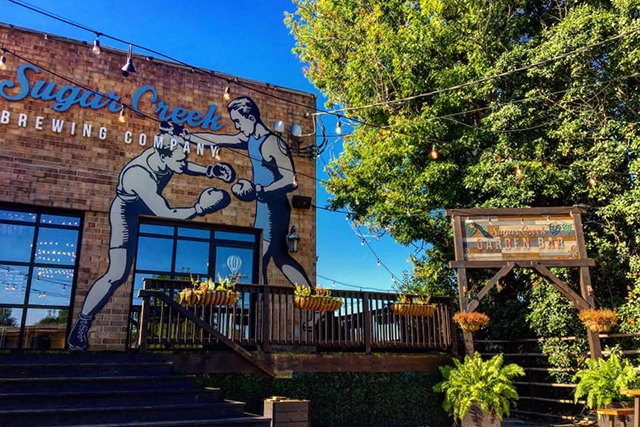
The addition of another option for breweries to label a can is now becoming more prevalent. Breweries like Sun King in Indianapolis, Rhinegeist in Cincinnati, and Phoenix’s PHX Beer have all started to release brands by using this new technology and all three said that when it comes to pricing it’s about as competitive as shrink-wrapped sleeves.
“For those that are in the shopping mode or looking for different options, I would actually point you towards digital printing cans,” said Rhinegeist’s Kevin Walke during the 2022 Ohio Craft Brewers Conference. “A 12-ounce can might be as high as 17 cents, or more than that, for a brite, and then add a label on top of that.
“The problem with labels is you have minimum order quantities, and you’re going to have tiered pricing on that. So you could be paying less per label as you get more volume, but there’s still gonna be a minimum of 500 or 1,000 … or 10,000 labels that you need to hit certain price tiers. I guarantee, if you’re anything like us, you’re probably ordering more labels than you need. And you have more loss in that way too.”
An upside to digitally printed cans is low minimums, explained PHX Beer’s Adam Wojcik and Sun King’s Clay Robinson, along with unlimited colors versus only up to seven colors on a printed run.
“Like with all things we try to group orders and take advantage of price breaks that come with quantity ordering,” Robinson said, “but because of the nature of digital printing, we can mix and match brands.
“It’s a bit more work to plan ahead, but as we’ve grown we’ve gotten better at that on all fronts.”
Wojick said being able to print digitally on smaller runs of beers helps in aesthetics.
READ MORE: Canning Your Brands: Shrink Wraps & Sticker Labels
“It just drove me nuts the fact that like, this was a sleeve, that was a screenprint. It just doesn’t look professional [on the shelf],” he said. “Then this opportunity came up and we’re doing that.”
Because of the cost difference and quantity needed, Sun King still attempts to have its flagship beers traditionally printed, but the recent changes to the can landscape have made that more difficult.
“We are working with multiple manufacturers and because of lead times, we have been filling out digital printing orders with flagship beers in order to maintain consistent supply,” Robinson said. “We have also been labeling obsolete inventory of cans, but as we get into the busy season labeling cans doesn’t work as well with the speed, we need to run our line, so digitally printed cans save us time and therefore money when we can’t get traditionally printed cans.”
Walke explained at the OCBA seminar that the cool thing about digitally printed cans is you can order by the layer, and there’s no minimum order quantity.
“You can order four layers of cans for your IPA or your Lager or it could be a rarity thing, or it could be your bulk,” he said. “And that’s huge. When you start weighing up … not only the price per can, you could actually put that up against what you’re throwing away in excess labels, or you know, you don’t have a solution somewhere else. So look into those. The proof process has been about two weeks, it’s pretty quick. And there’s no minimum order quantity. So I think that’s a pretty attractive option too.”
The upside, Robinson pointed out, is that you can print smaller runs that you wouldn’t otherwise be able to do with conventional can printing.
”I’m all for these,” Wojcik said while holding a digitally printed can of its Arizona Gold Golden Ale (pictured). ”These are recyclable. Same lead, same cost, roughly. I just wonder what that means for the sleeve business moving down the road.”
Photo credits: Alexander Rodgers, Sun King Brewery & PHX Beer Co.




Be the first to comment